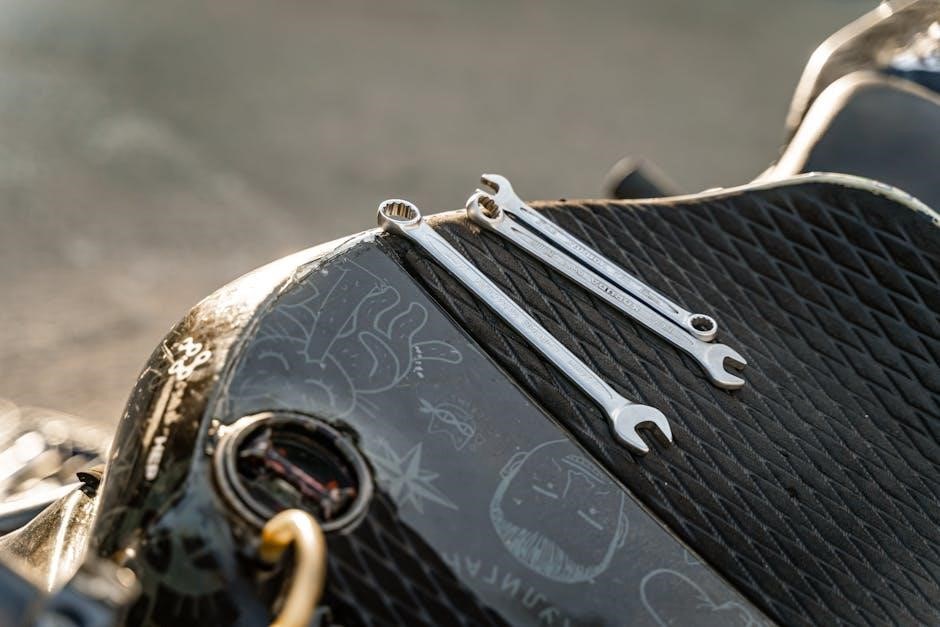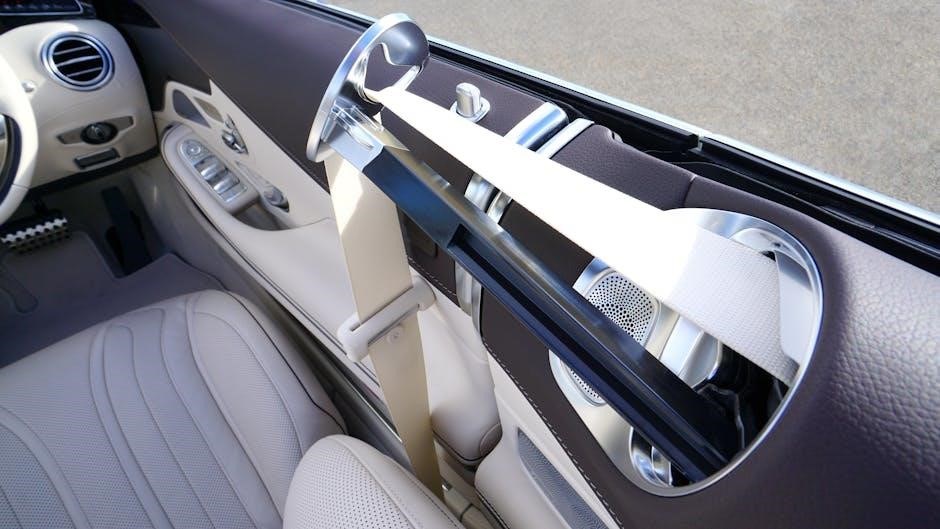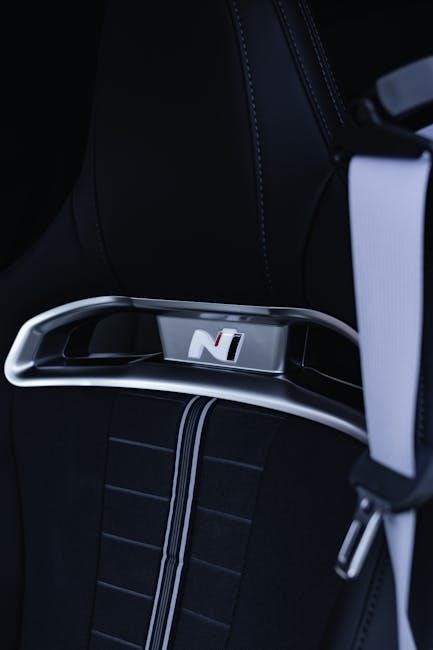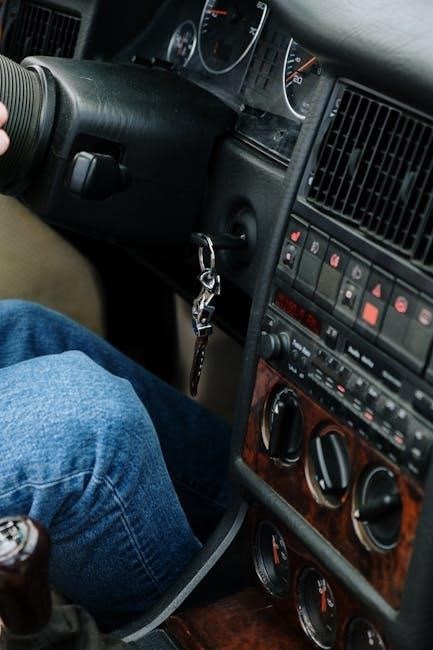
The Safety 1st EverFit All-In-One Car Seat manual is a comprehensive guide essential for proper installation and usage. It ensures safety and optimal functional usage for your child.

1.1 Importance of Reading the Manual
Reading the Safety 1st EverFit All-In-One Car Seat manual is crucial for ensuring your child’s safety and proper usage. It provides detailed guidance on installation, safety features, and maintenance, helping parents understand the seat’s capabilities and limitations. Failure to follow the manual can lead to incorrect installation, compromising safety. The manual covers key topics like weight and height limits, modes of use, and troubleshooting common issues. It also outlines essential safety certifications and compliance standards, such as FMVSS 213, ensuring parents are informed about the seat’s reliability. By adhering to the manual’s instructions, parents can maximize the seat’s longevity and ensure optimal protection for their child. The manual is organized to guide users through safe and effective use, making it an indispensable resource for all parents.
1.2 Key Features of the Safety 1st EverFit All-In-One Car Seat
The Safety 1st EverFit All-In-One Car Seat is designed to provide long-lasting safety and comfort for children. It supports three modes of use: rear-facing, forward-facing, and booster, accommodating children from infancy to youth. The seat features a 10-position headrest and harness system, allowing for easy adjustment as your child grows. Its lightweight and compact design makes it easy to transfer between vehicles. The EverFit also includes side impact protection for enhanced safety and a LATCH system for secure installation; The seat is constructed with durable materials and features a washable fabric cover for convenience. These features ensure that the EverFit grows with your child, providing a safe and comfortable riding experience for years. Its versatility and advanced safety features make it a reliable choice for parents seeking a high-quality car seat.
1.3 Table of Contents
This manual is organized to provide easy access to information about the Safety 1st EverFit All-In-One Car Seat. The table of contents outlines the key sections and subsections, ensuring a seamless navigation experience. Below is a list of the main topics covered:
- Importance of Reading the Manual
- Key Features of the Safety 1st EverFit All-In-One Car Seat
- Table of Contents
- Product Overview
- Modes of Use: Rear-Facing, Forward-Facing, and Booster
- Weight and Height Limits for Each Mode
- Design and Materials Used
- Safety Features
- 5-Point Harness System
- Side Impact Protection
- LATCH (Lower Anchors and Tethers for Children) System
- Installation Guidelines
- General Installation Considerations
- Rear-Facing Installation Steps
- Forward-Facing Installation Steps
- Booster Seat Installation Steps
- Securing the Car Seat in the Vehicle
- Maintenance and Upkeep
- Cleaning the Car Seat
- Storage Tips When Not in Use
- When to Replace the Car Seat
- Troubleshooting Common Issues
- Addressing Harness Tightness
- Solving LATCH Connectivity Problems
- Certifications and Compliance
- FMVSS 213 Compliance
- Understanding Safety Ratings and Certifications
- Final Safety Reminders
- Additional Resources
This structured approach ensures users can quickly locate specific information, making the manual user-friendly and efficient.

Product Overview
The Safety 1st EverFit All-In-One Car Seat is a 3-in-1 convertible seat designed for safety and comfort, accommodating rear-facing, forward-facing, and booster modes, with adjustable features for growing children.
2.1 Modes of Use: Rear-Facing, Forward-Facing, and Booster
The Safety 1st EverFit All-In-One Car Seat offers three versatile modes of use, ensuring safety and comfort for children as they grow. In rear-facing mode, it accommodates infants from 4-40 lbs, providing optimal protection for their delicate neck and spine. Once the child outgrows this stage, the seat transitions to forward-facing mode, suitable for toddlers weighing between 22-65 lbs, with a harness that secures them tightly. Finally, the booster mode supports older children up to 120 lbs, using the vehicle’s seat belt to position the lap and shoulder belts correctly. This 3-in-1 design eliminates the need for multiple car seats, offering a cost-effective and convenient solution for families. Each mode is designed to adapt to a child’s growth, ensuring proper fit and enhanced safety at every stage.
2.2 Weight and Height Limits for Each Mode
The Safety 1st EverFit All-In-One Car Seat is designed to accommodate children across various growth stages, with specific weight and height limits for each mode. In rear-facing mode, the seat is suitable for infants weighing 4-40 lbs and up to 40 inches tall. For forward-facing mode, the weight range increases to 22-65 lbs, with a maximum height of 49 inches. The booster mode supports children weighing 40-120 lbs and measuring 43-57 inches tall. These limits ensure proper fit and safety, as exceeding them could compromise protection. Always refer to the manufacturer’s guidelines to confirm the correct mode for your child’s size. Adhering to these limits guarantees optimal safety and comfort as your child grows. Proper use within these specifications ensures the seat functions as intended, providing reliable protection in the event of a collision.
2.3 Design and Materials Used
The Safety 1st EverFit All-In-One Car Seat is crafted with premium materials and a thoughtful design to ensure durability, comfort, and safety. The seat features a sturdy frame made from high-quality plastics, while the padding is constructed from soft, breathable fabrics to provide optimal comfort for long drives. The ergonomic design includes a contoured back and adjustable headrest, which supports proper spinal alignment and grows with your child. The seat’s cover is removable and machine washable, making maintenance convenient. Additionally, the integrated cup holders and storage compartments add practicality. The materials are carefully selected to meet rigorous safety standards, ensuring resilience in various conditions. The lightweight yet robust construction makes installation and repositioning easier without compromising safety. This combination of design and materials ensures the EverFit car seat remains a reliable choice for families seeking both comfort and protection.
Safety Features
The Safety 1st EverFit All-In-One Car Seat is designed with advanced safety features, including a robust 5-point harness, side impact protection, and the LATCH system for secure installation.
3.1 5-Point Harness System
The Safety 1st EverFit All-In-One Car Seat features a premium 5-point harness system designed to provide superior protection and comfort for children. This system includes five points of contact: two at the shoulders, two at the hips, and one at the crotch. The harness is made from high-strength, durable materials that ensure optimal safety in the event of a collision. It is engineered to distribute crash forces evenly across the body, minimizing the risk of injury. The harness is also easy to adjust, with a no-rethread design that allows parents to customize the fit as their child grows. Additionally, the chest clip is designed to keep the harness properly positioned, ensuring maximum protection. The 5-point harness system meets rigorous safety standards, offering peace of mind for parents while providing a secure and comfortable ride for children.
3.2 Side Impact Protection
The Safety 1st EverFit All-In-One Car Seat is equipped with advanced side impact protection, designed to safeguard your child in the event of a collision. The car seat features a robust, energy-absorbing foam structure that minimizes the force of impact on your child’s head, neck, and torso. The seat’s reinforced frame and strategically placed padding work together to provide maximum protection. Additionally, the adjustable headrest ensures proper alignment with your child’s shoulders, further enhancing safety. This system is rigorously tested to meet or exceed federal safety standards for side impact protection. The combination of these features creates a secure and protective environment for your child, offering peace of mind for parents. Regular maintenance, as outlined in the manual, is essential to ensure the effectiveness of these safety features.
3.3 LATCH (Lower Anchors and Tethers for Children) System
The Safety 1st EverFit All-In-One Car Seat is equipped with the LATCH (Lower Anchors and Tethers for Children) system, designed to provide a secure and straightforward installation process. The LATCH system includes built-in lower anchors and tethers that connect directly to the vehicle’s LATCH anchors, eliminating the need for seat belts in most cases. This system ensures a snug and stable fit, reducing the risk of improper installation. The tethers are adjustable, allowing for a customized fit to your vehicle’s configuration. Always ensure the LATCH connectors are securely attached and tightened properly, as outlined in the manual. Regularly inspect the LATCH components for damage or wear, and replace them if necessary. This system is a critical component of the car seat’s safety features, providing added peace of mind for parents.

Installation Guidelines
Ensure your vehicle is LATCH-equipped or prepare for seat belt installation. Position the car seat correctly, following manual instructions for rear-facing, forward-facing, or booster modes. Always verify proper fit.
4.1 General Installation Considerations
Before installing the Safety 1st EverFit All-In-One Car Seat, ensure your vehicle is compatible and select the correct mode of use. Always read the vehicle’s owner’s manual alongside this guide. Choose a seating position that allows proper installation, ideally in the back seat and center position for optimal safety. Use either the LATCH system or a vehicle seat belt, but not both. Tighten the seat belt or LATCH straps until the car seat is secure and cannot move more than 1 inch side to side or front to back. Ensure the car seat is level; check the built-in level indicator. Avoid using aftermarket products unless approved by Safety 1st. Follow all vehicle manufacturer guidelines for car seat installation. Test the installation by tugging the seat firmly to ensure stability. Always double-check the fit and security before placing your child in the seat.
4.2 Rear-Facing Installation Steps
- Place the car seat in the rear-facing position, ensuring it is level. Use the built-in level indicator to confirm proper alignment.
- Route the vehicle seat belt or LATCH strap through the designated rear-facing beltpath. For LATCH, attach the lower anchors to the car seat’s connectors, ensuring they click securely.
- Tighten the LATCH straps or seat belt by pulling the free end until the car seat is firmly secured and cannot move more than 1 inch in any direction.
- Check the car seat’s level again after tightening, as adjustments may affect its position.
- Secure your child by fastening the 5-point harness snugly, ensuring the chest clip is at armpit level and the straps are not twisted.
- Test the installation by tugging the car seat gently to ensure it is stable and properly secured.

Always follow the vehicle and car seat manuals for specific instructions, and ensure the rear-facing position is used until your child reaches the recommended weight or height limit.
4.3 Forward-Facing Installation Steps
- Move the car seat to the forward-facing position, ensuring it is level. Use the built-in level indicator to confirm proper alignment.
- Route the vehicle seat belt or LATCH strap through the forward-facing beltpath. For LATCH, attach the lower anchors to the car seat’s connectors, ensuring they click securely.
- Adjust the harness height to match your child’s shoulders, ensuring the straps are snug and not twisted.
- Tighten the LATCH straps or seat belt by pulling the free end until the car seat is firmly secured and cannot move more than 1 inch in any direction.
- Check the car seat’s level again after tightening, as adjustments may affect its position.
- Fasten the 5-point harness snugly, ensuring the chest clip is at armpit level.
- Test the installation by tugging the car seat gently to ensure stability.
Always refer to the vehicle and car seat manuals for specific instructions, and ensure the forward-facing position meets the child’s weight and height requirements.
4.4 Booster Seat Installation Steps
- Convert the car seat to booster mode by removing the backrest if required. Ensure the seat is placed upright on the vehicle’s seat cushion.
- Position the booster seat in the vehicle, ensuring it lies flat and is centered over the vehicle seat.
- Route the vehicle’s seat belt through the booster’s belt guide, ensuring it is properly aligned with the child’s body.
- Fasten the seat belt and pull the strap to tighten it, making sure the booster seat is snug against the vehicle seat and cannot move more than 1 inch in any direction.
- Check that the lap belt is low on the child’s hips and the shoulder belt crosses the center of their shoulder, avoiding any twisting.
- If using a backless booster, ensure the vehicle’s headrest does not interfere with the child’s head or neck position.
- Test the installation by gently pulling the booster seat to ensure it is secure.
Always follow the vehicle manufacturer’s instructions and the car seat manual for specific booster seat installation requirements.
4.5 Securing the Car Seat in the Vehicle
- Ensure the car seat is properly installed in your vehicle using the LATCH system or seat belt, as outlined in previous sections.
- Tighten the harness straps snugly around the child, ensuring the chest clip is at armpit level and the straps are free from slack.
- Check that the car seat does not move more than 1 inch in any direction at the base.
- For forward-facing installations, ensure the top tether is securely attached to the vehicle’s tether anchor to reduce forward movement.
- Buckle the child into the car seat, making sure the seat belt (for booster mode) or harness is correctly positioned.
- Regularly inspect the car seat’s placement and tighten the installation as needed to maintain a secure fit.

Always perform a final check before each trip to ensure the car seat remains properly secured and the child is safely restrained.
Maintenance and Upkeep
Regularly clean the car seat, check for wear, and store it in a dry, cool place when not in use to ensure longevity and safety.
5.1 Cleaning the Car Seat
Regular cleaning is essential to maintain the Safety 1st EverFit All-In-One Car Seat’s functionality and hygiene. Start by vacuuming loose debris from the seat and crevices. For stains or spills, gently wipe the fabric with a soft, damp cloth. Avoid soaking the fabric to prevent mold or mildew. Do not machine wash or dry the seat, as this may damage materials or void the warranty. For tough stains, mix a small amount of mild soap with warm water, dip a clean cloth into the solution, and blot the area gently. Avoid using bleach, harsh chemicals, or abrasive cleaners, as they can weaken materials or discolor fabrics. Clean the harness straps with a soft cloth and mild soap, ensuring they are completely dry before use. Regularly inspect and clean the buckle and plastic components with a mild soap and water solution, rinsing thoroughly. Always air dry the seat and its components to maintain integrity. Regular cleaning helps ensure the seat remains safe and comfortable for your child.
5.2 Storage Tips When Not in Use
When storing the Safety 1st EverFit All-In-One Car Seat, ensure it is kept in a cool, dry place away from direct sunlight. Avoid storing it in attics, basements, or areas prone to moisture, as this can damage the materials. Do not leave the car seat in a hot vehicle for extended periods, as heat can degrade the plastic and foam. If storing for a long time, place the seat in a breathable cover or bag to protect it from dust. Store all accessories, such as the manual and LATCH straps, in a labeled container with the seat for easy access. Avoid compressing or folding the seat, as this may damage its structure. Before reusing the seat, inspect it for any signs of damage or wear and ensure it has not exceeded its expiration date, which is printed on the label.
5.3 When to Replace the Car Seat
The Safety 1st EverFit All-In-One Car Seat should be replaced in specific situations to ensure optimal safety. Replace the seat if it has been involved in a crash, even if no visible damage is present, as internal components may be compromised. Check the expiration date printed on the manufacturer’s label, typically ranging from 7 to 10 years from the date of manufacture. If the seat shows signs of wear, such as frayed straps, cracks in the plastic, or faded labels, it should be replaced. Additionally, replace the seat if it has been recalled by the manufacturer. Always refer to the NHTSA website for recall information. If the seat no longer fits your child properly or has exceeded its weight or height limits, it is time to upgrade. Never use a car seat beyond its expiration date or in poor condition.

Troubleshooting Common Issues
Troubleshooting common issues helps ensure your car seat functions safely. Address problems like harness tightness or LATCH connectivity. Consult the manual or contact customer support for guidance.
6.1 Addressing Harness Tightness

Ensuring proper harness tightness is crucial for your child’s safety. To address harness tightness, first, locate the adjustment strap at the bottom of the seat. Pull the strap to tighten or loosen the harness. Always check that the harness straps are snug but not overly tight, as they should pass the “inch test”—no more than one inch of movement when pulled at the shoulder. If the harness feels too loose, tighten it in small increments until it fits securely. For rear-facing installations, ensure the harness is at or below your child’s shoulders, while for forward-facing, it should be at or above. Regularly inspect the harness for proper fit as your child grows. If issues persist, refer to the manual or contact customer support for assistance. Proper harness adjustment ensures optimal protection during travel.
6.2 Solving LATCH Connectivity Problems
If you encounter issues with the LATCH system, start by ensuring the lower anchors in your vehicle are accessible and free from debris. Verify that the LATCH connectors on the car seat are properly aligned with the vehicle’s anchors. Gently rock the seat from side to side while securing it to ensure a snug fit. If the connectors feel loose, tighten the LATCH straps incrementally until firm. Always double-check the connection by tugging on the seat to confirm stability. If problems persist, inspect the connectors and anchors for damage or dirt. Clean them if necessary and retry the installation. Refer to your vehicle’s manual for specific LATCH anchor locations and usage guidelines. Proper LATCH connectivity is essential for safe and secure installation of the Safety 1st EverFit All-In-One Car Seat.

Certifications and Compliance
The Safety 1st EverFit All-In-One Car Seat meets rigorous safety standards, including FMVSS 213 and NHTSA regulations, ensuring compliance with federal safety requirements for child restraints.
7.1 FMVSS 213 Compliance
The Safety 1st EverFit All-In-One Car Seat is fully compliant with Federal Motor Vehicle Safety Standard (FMVSS) 213, which sets strict criteria for child restraint systems. This certification ensures the seat meets rigorous testing standards for crash protection, durability, and safety performance. FMVSS 213 includes requirements for structural integrity, harness strength, and energy absorption to safeguard children in various crash scenarios. The seat undergoes extensive testing, including front, side, and rear impact simulations, to verify its ability to protect a child effectively. Compliance with FMVSS 213 is mandatory for all car seats sold in the U.S., and the EverFit model exceeds these standards, providing parents with confidence in its safety and reliability. Always ensure proper installation and use to maximize the benefits of this compliance.
7.2 Understanding Safety Ratings and Certifications
Understanding safety ratings and certifications is crucial for ensuring the Safety 1st EverFit All-In-One Car Seat meets rigorous safety standards. This seat has been evaluated by reputable organizations, such as the National Highway Traffic Safety Administration (NHTSA) and the Insurance Institute for Highway Safety (IIHS). These ratings assess factors like crash performance, ease of use, and installation features. The NHTSA assigns a 5-star rating based on how well the seat protects children in various crash scenarios. Additionally, the IIHS evaluates seats for their ability to properly fit a wide range of vehicles and for ease of use. Parents can check the rating labels on the seat or visit official websites for detailed information. These certifications and ratings provide reassurance that the EverFit model prioritizes child safety and meets industry benchmarks for protection and reliability.
The Safety 1st EverFit All-In-One Car Seat ensures optimal safety and comfort for children through proper installation, regular maintenance, and adherence to guidelines outlined in this manual.
8.1 Summary of Key Points
The Safety 1st EverFit All-In-One Car Seat is a versatile and reliable option for parents, offering three modes of use: rear-facing, forward-facing, and booster. Proper installation is critical, with clear guidelines for each mode, including weight and height limits. The seat is designed with premium materials and features like the 5-point harness system, side impact protection, and the LATCH system for enhanced safety. Regular maintenance, such as cleaning and proper storage, ensures longevity and effectiveness. Always follow the manual for installation, securing the seat, and addressing common issues like harness tightness or LATCH connectivity. Compliance with FMVSS 213 and other safety certifications ensures the seat meets rigorous safety standards. By adhering to the guidelines, parents can provide their children with a safe and comfortable travel experience.
8.2 Final Safety Reminders
Always follow the manual instructions for installation, use, and maintenance to ensure your child’s safety. Regularly inspect the car seat for wear and tear, and never use it if damaged. Keep the harness snug and ensure the seatbelt or LATCH system is securely fastened. Avoid leaving your child unattended in the car seat. Stay informed about product updates or recalls. Remember, proper usage and adherence to weight and height limits are critical for safety. By following these guidelines, you can help protect your child during travel. Safety is a shared responsibility, so stay vigilant and proactive in maintaining a secure environment for your child.

Additional Resources
For further assistance, visit the official Safety 1st website at https://www.safety1st.com for product support, FAQs, and downloadable resources. Contact their customer service at consumer-services@safety1st.com or call their helpline at 1-800-544-1108 for specific inquiries. Additionally, refer to the National Highway Traffic Safety Administration (NHTSA) website at https://www.nhtsa.gov for car seat safety guidelines and recall information. Your local car seat inspection stations can also provide hands-on guidance. Always check for updates or recalls on your Safety 1st EverFit All-In-One Car Seat. For troubleshooting, revisit the troubleshooting section in this manual. Follow Safety 1st on social media for product updates and safety tips. Remember, proper use and maintenance are key to ensuring your child’s safety while traveling.